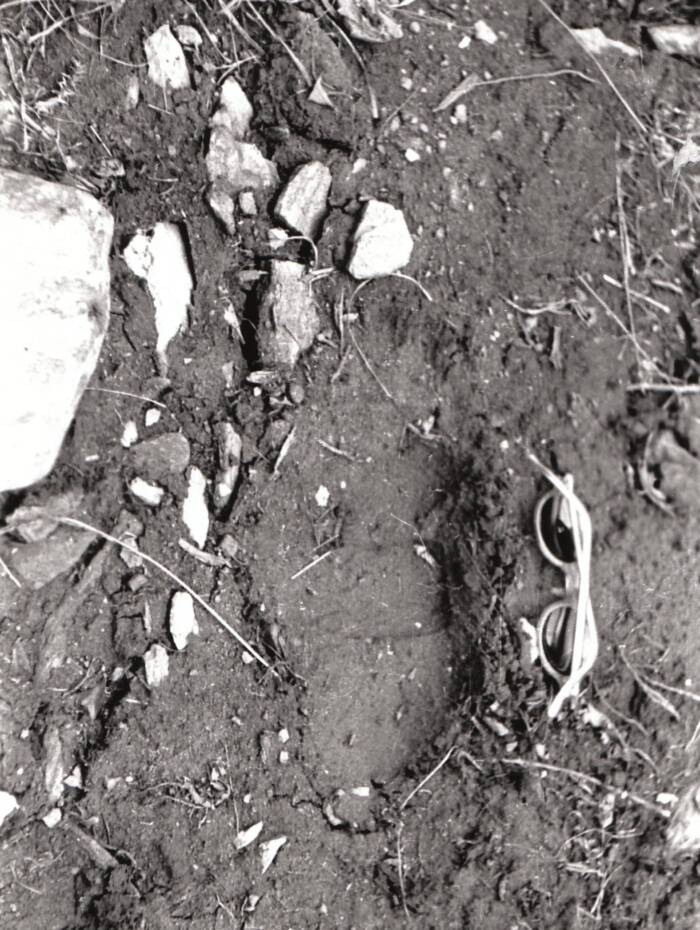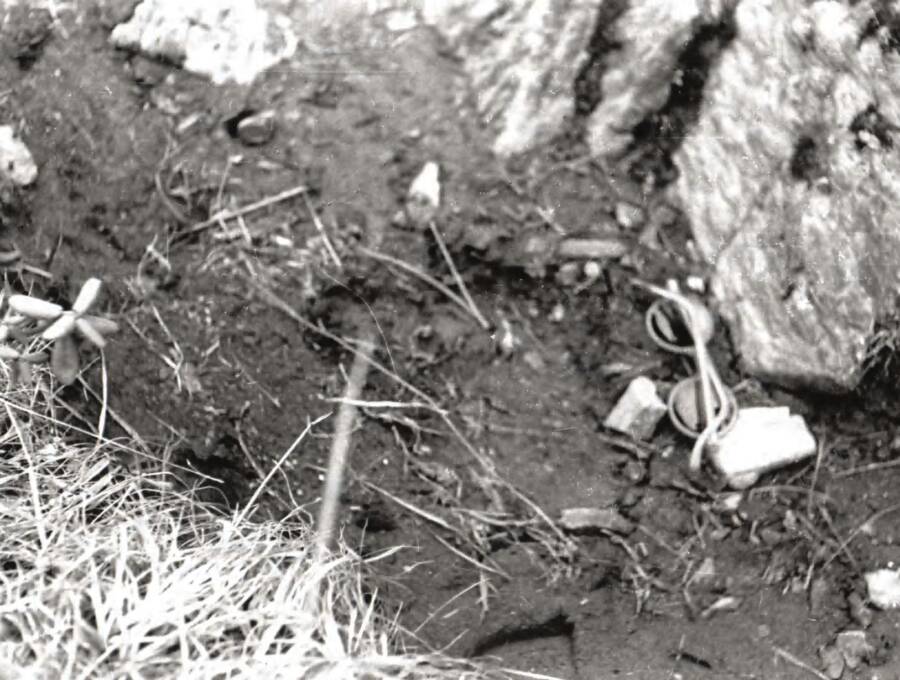C. R. Cooke’s Sighting Of The Yeti’s Footprints

Public DomainA photograph of a purported Yeti footprint taken by C. R. Cooke in 1944.
In June 1944, British mountaineer C. R. Cooke and his wife, Maragaret, embarked on an expedition along the Singalila Ridge near Darjeeling, India, climbing to an elevation of roughly 14,000 feet.
There, the Cookes came across a set of large footprints imprinted in the mud. C. R. Cooke documented this discovery through a series of photographs, using items at his disposal for scale.
In his autobiography Dust and Snow: Half a Lifetime in India, Cooke recalled, “We laid Maragaret’s sunglasses beside each print to indicate its size and took photographs. These prints were strange and larger than any normal human foot, 14 inches heel to toe, with the great toe set back to one side, a first toe, also large, and three little toes closely bunched together.”

Public DomainAnother angle of the footprint found by C. R. Cooke, with his wife’s sunglasses lying next to it.
At the time, Cooke’s local porters attributed the tracks to “Jungli Admi” or the “wild man,” but the mountaineer believed they belonged to the Yeti.
Although Cooke’s photographs did not create the same stir that Shipton’s later would, the fact that they predate Shipton’s has regularly been cited as evidence of their authenticity. Cooke’s encounter came long before the slew of purported Yeti sightings that were reported after Shipton’s photos were printed.
Still, some people have said that the Cooke prints belonged to other animals, like bears, or even unknown primate species in the region. While it’s still unclear exactly what made the tracks, Cooke’s photographs remain a vital part of Yeti lore.





